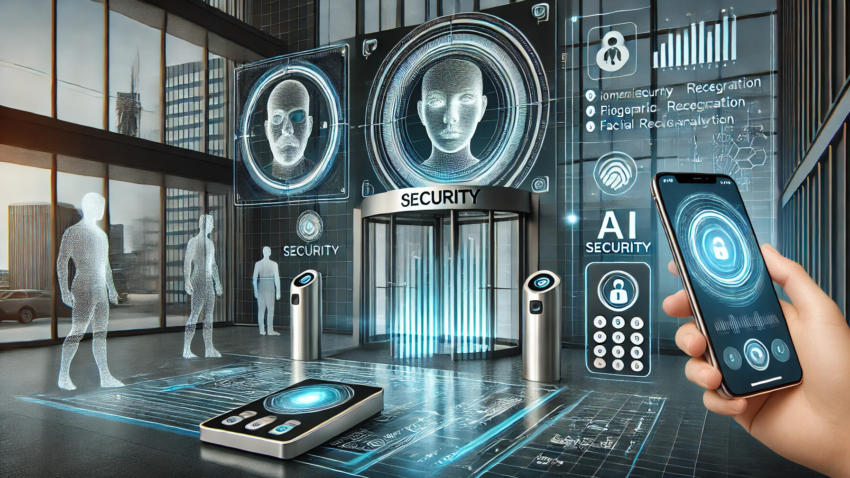
The Development of Access Controls: From Physical Systems to AI-Powered Security
The backbone of security is access controls. They protect physical and digital assets against unauthorized entry. To stay ahead of the curve, businesses need to adopt more advanced systems, such as PACS HID cloud platforms and AI-driven solutions.
This article explains the key access control technologies and their applications. It also explains why they are important for UK businesses and beyond.
What Are Access Controls?
Access Controls are measures of security that control who or what is allowed to view, enter, or use resources within a physical or digital setting.
These include keycards and biometric scanners as well as passwords and AI algorithms. Access control systems that are effective minimize risks, protect sensitive information, and ensure compliance with regulations such as GDPR (crucial UK accessibility controls).
Access Control Systems: The Foundation of Security
An Access Control System (ACS) is a centralized platform that manages permissions for users across devices, networks, nd facilities. The key components are:
- Credentials: Key fobs or mobile apps.
- Readers’ Devices used to authenticate credentials.
- A controller is hardware that allows or denies access.
- Software Dashboards for monitoring policy and management.
Businesses use ACS for the security of offices, data centres, and IoT ecosystems. Hospitals, for example, restrict access to patient information, while factories limit entry only to authorized personnel.
PACS Access Controls: Securing Physical Spaces
Access Controls Protect buildings, rooms, and critical infrastructure. PACS provides granular control, unlike traditional locks.
- Smart Cards or Mobile Credentials for Contactless Entry.
- Time-based restriction (e.g., allowing access during working hours).
- Audit Trails Track entry/exit time.
PACS is used by industries like healthcare, government, and education to ensure compliance with safety standards.
HID Access Controls: A Leader in Secure Identity Solutions
HID Global is one of the leading providers of access control technology.
- Proximity Cards and Readers: Widely Used for Office Access.
- Mobile Access: Employees can unlock doors using smartphones.
- Multifactor authentication (MFA).Combining cards, PINs, or biometrics.
HID access controls can be scaled, making them perfect for enterprises that need flexible and future-ready security.
.UK Access Controls: Compliance and Innovation
In the UK, strict regulations such as GDPR and the Data Protection Act 2018 mandate robust. The following are key considerations:
- Data Privacy: Encrypting the personal information collected by ACS.
- Visitor Management: Screening visitors in high-security industries like finance.
- Integration of fire systems: Ensure emergency exits are accessible.
Businesses in the UK are also using cloud-based access controls for remote work and to streamline audits.
Cloud Access Controls: Security Beyond Boundaries
Cloud-based access controls allow organizations to manage permissions remotely over the internet. Benefits include:
- Scalability: Add or remove users across all global locations instantly.
- Cost Savings: There are no on-premise servers or IT maintenance.
- Real-time updates: Restrict access immediately in the event of a lost device.
Cloud systems are used by industries like retail and logistics to monitor multiple sites using a single dashboard.
.AI Access Controls: The Future of Security
AI Access Control: Leverage machine learning and biometrics to improve security.
- Behavioral Analytics: Detect anomalies, such as an employee who accesses a restricted area during odd hours.
- Facial Recognition: Replace the passwords with biometric scanners
- Predictive Threat Detection: Identify vulnerability before breaches occur.
Airports, for example, use AI to speed up the screening of passengers while maintaining safety.
Choosing the Right Access Control System
Consider these factors when selecting a system:
- Compliance: Alignment with UK/EU regulations.
- Scalability: Can it grow along with your business?
- Integration – Does it integrate with existing tools such as CCTV or HR software
- Budget: Balance upfront costs and long-term ROI.
HID Global, for example, offers end-to-end services. Meanwhile, AI and cloud platforms are geared towards tech-savvy industries.
Conclusion
The technology is evolving quickly. From PACS to AI algorithm for predicting threats. Businesses in the UK, especially, need to combine innovation with compliance by adopting cloud based, and AI driven systems. The right technology can not only reduce risks, but also build trust among clients and employees.








